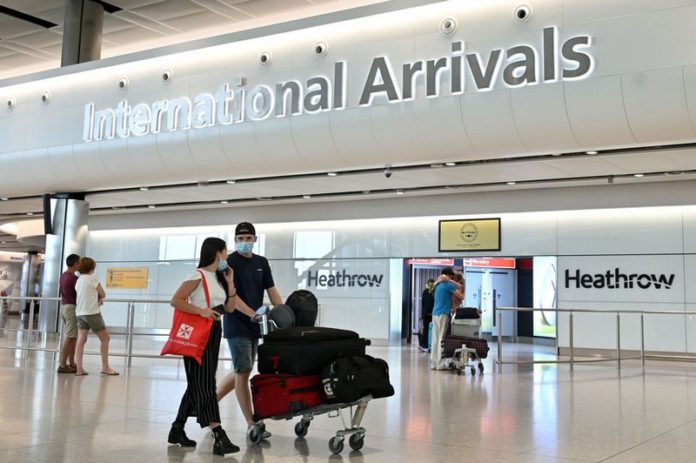Flying won’t be the same for the forseeable future
With the easing of lockdown on the horizon, many Londoners are going to start thinking about travelling abroad again.
But with the pandemic far from over, passenger welfare is forcing airports to bring in numerous new measures.
Some have already been implemented by the airports themselves while others are being imposed by the government after months of being asked by airports for more direct guidance.
Here are the seven major changes at London’s airports:
1. Mandatory quarantining
From June 8, the vast majority of passengers arriving in the UK by plane, ferry or train will be required to self-isolate for 14 days.
These rules were announced on Friday (May 22) by Home Secretary Priti Patel.
Passengers are urged to use personal transport such as a car to get from the airport to the place they will quarantine.
According to government advice, people quarantining “should not go to work, school, or public areas, or use public transport or taxis. They should not have visitors, including friends and family, unless they are providing essential support.”
2. Rule breakers could be fined
As a way of enforcing the new measures, the government will be able to issue fines to rule breakers.
Flyers who breach the quarantine rules could face a £1,000 fixed penalty notice or even a potential prosecution and unlimited fine.
According to the authorities: “The level of fine could increase if the risk of infection from abroad increases.”
3. Who doesn’t have to quarantine?
Despite the strict and enforced rules, some people will be exempt.
These include:
- truckers and lorry drivers. This is ensure the supply of goods is not impacted
- medical professionals travelling to help with the fight against coronavirus
- anyone moving from within the Common Travel Area, covering Ireland, the Channel Islands and the Isle of Man
- seasonal agricultural workers who will self-isolate on the property they are working at
Other options will be looked at such as the establishment of ‘air bridges’.
These are agreements between countries of low transmission rates to not require quarantining.
4. Where you can quarantine
Passengers who need to quarantine (ie the majority) will have to tell authorities where they will be isolating.
If the property is not deemed suitable they could be required to self-isolate in facilities arranged by the government.
The government said: “If this does not meet the necessary requirements – such as hotels, or with friends or family – they will be required to self-isolate in facilities arranged by the government.”
MyLondon have contacted the Home Office for more detail on what the “necessary requirements” are and what properties meet them.
5. Contact locater
To ensure that passengers are self-isolating and doing it in an appropriate location, all arrivals will be required to fill in a form with contact and further travel information.
This will mean the government can contact the passenger if they or anyone they’ve been in contact with contracts the disease.
Also the passenger will provide the details of where they will be spending the 14 day quarantine and authorities can deem if they meet the “necessary requirements”.

6. Limited destinations
Despite all the measures put in place on the London end of the flight, some destinations will not be available due to decisions on the other end.
Spain, a hugely popular destination for British tourists, has said that only Spanish citizens, legal residents of the country and those on essential journeys will be allowed into the country.
Similarly Greece has not included the UK in the list of countries from where they will accept holidaymakers.
Italy, France, US, Canada, UAE, Australia and New Zealand are also among the countries that have imposed forms of restrictions.
In this rapidly changing situation, the range of destinations will be limited.
7. Mandatory PPE and social distancing
Two phrases we never had to think about until the pandemic swept in.
Now they’re part of most conversations and many of the airports require them.
The government have said all passengers should remain 2m apart and where possible wear a face mask.
Those travelling through Stansted have already been told to cover their faces and wear gloves.
These measures are widely believed to be one of the most effective ways of stopping the spread.

